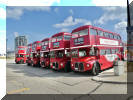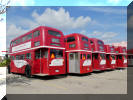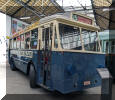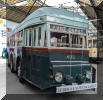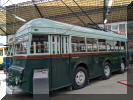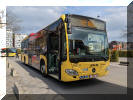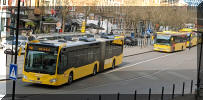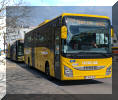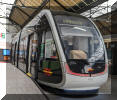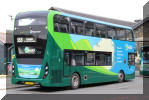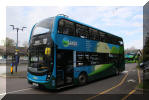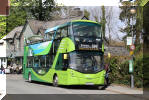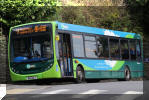
Issue nr. 249
Wednesday, May 3rd 2023
From The Editor
My apologies for the missing issue last week and thus the combination of two weeks together. Your contributions have been excellent and I have been spoilt for choice.
I have tried to give everyone a fair showing and hope that you will enjoy the large content from the Romford Open day, the ongoing closure of the rail service between Oxford and Didcot plus the closure of the Botley Road Bridge.
Bus services in the Oxford area have never faced so great a problem but things seem to go well.
There is more from London and of course we are heading for King Charles III Coronation and the first of some special wraps with more for the next issue.
The Yellow Bus Story continues and we have interesting contributions from Canada and Liege.
Finally the latest Ensign movements list is included.
![]()
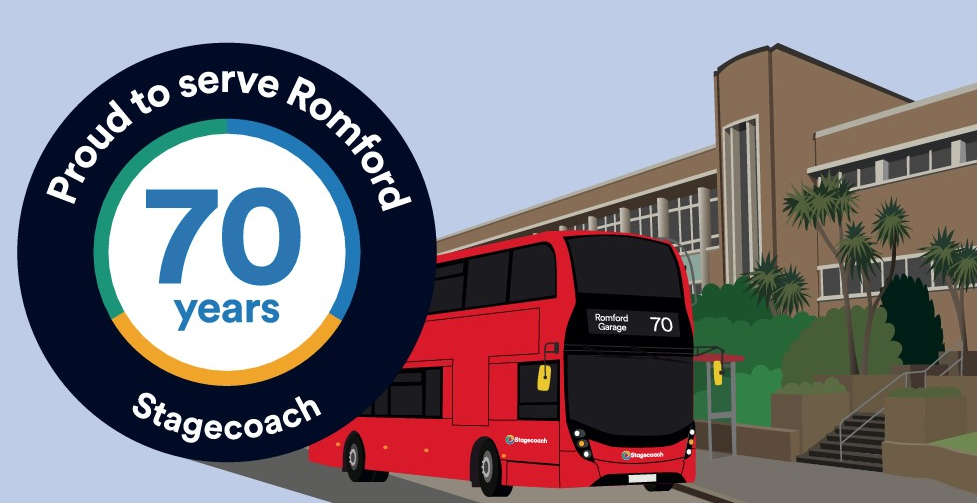
Andrew D Webb
Romford Garage was opened by London Transport in 1953. Seventy years later it is run by Stagecoach, who hosted an Open Day on 22 April to celebrate the milestone. A range of preserved vehicles were lined up inside the garage for local residents and visiting enthusiasts
Alongside the open day, route 247 hosted a supplementary service of five vehicles working 'shorts' between Romford station and Collier Row. Route 247 has always been operated by the garage since it started on 4 September 1992.
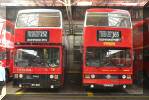
Leyland Titans were the initial allocation so crew operated buses would not have
been seen.
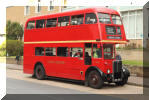
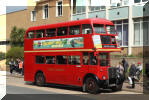
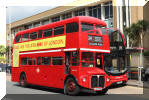
Nevertheless RT2150, RT3933 and RML2579 were welcome visitors
to the route and attracted plenty of attention.
S
During the 1990s Capital Citybus were a key competitor to Stagecoach for route tenders across east London. Never successful in gaining route 247 meant that the company's bright yellow livery never worked the route. Capital Citybus passed to First who sold out to Tower Transit who subsequently sold out to Stagecoach.
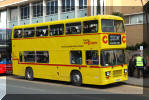
The appearance of preserved Leyland Olympian J135PVC shows
what might have been if the yellow livery had survived into the Stagecoach era.
It seen pausing at the garage with a healthy load.
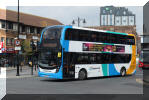
Swapping East Kent for east London, Enviro 400 MMC 10704 was the fifth vehicle
used.
It is seen arriving at Romford station ready for another trip to
Collier Row.
This is not the first time that the route has hosted a Stagecoach bus in corporate livery. Shortly after buying East London, Stagecoach suffered a shortage of vehicles and drafted in some provincial Alexander bodied Volvo B10Ms.
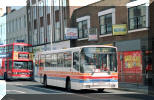
L341KCK is seen in Romford on 22 June 1995.
Buses operating on TfL routes are gaining stickers to show if they are pure diesel, hybrid or pure electric. These are being placed on the offside of the blind boxes as demonstrated by Stagecoach Enviro 200 36577 leaving Romford garage.
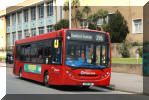
The pump shows that it is reliant on diesel engine to move.
It is believed that these are being applied
to aid emergency services dealing
with vehicle fires and is a consequence of the large blaze at Potter Bar garage
in 2022
Adam Green
A few photos from Saturday 22nd April 2023 Romford Bus Garage Open Day.
Gavin Francis
Went to the Romford North Street Open Day Saturday
morning.
There was a mini running day on Rte 247 which linked
Romford Station to the garage.
Buses involved and what I think are the best pictures:
I have read SC are having to renumber their electric bus fleet as they do not have enough numbers spare.

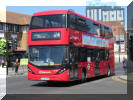
Picture shows fleet number 84143 which was previously 14143.
![]()
THE CONTINUING STORY OF RAIL REPLACEMENT BETWEEN OXFORD AND DIDCOT
David Beynon
A few rail replacement pictures.
Gavin Francis
Then after GG went to railway station.
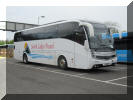
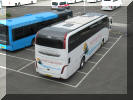
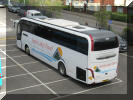
There was a
Levante owned by South Lakes Travel from Barrow-in-Furness on the RR service.

Thought I recognised the registration and it was former OBC 50.
James Freeman was at Oxford Station on May 2nd and caught Green Bus workings
Jack Cooper
On Sunday 16th April, Oxford Bus used 219, 220, 221, 222 and 660 on Rail Replacement, with 692 and 906 on standby duties at Didcot Parkway.
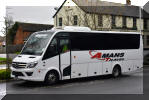
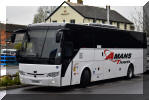
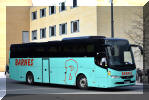
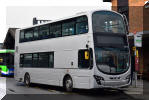
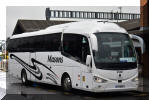
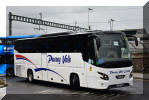
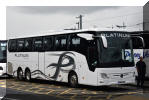
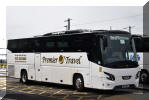
The Ex Cardiff Decker belongs to DEWS
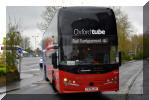
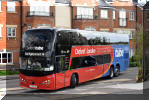
The large parking area off ~Becket Street is used
for Rail Replacement.
50440 and 50441 are seen on this work.
![]()
Botley Road closure
Gavin Francis




These pictures give an idea of workings but an aerial shot would be good.
Ed.
Neil Gow
The bus turning arrangements on the west side of Oxford station look highly sophisticated compared to what was in place the last time they rebuilt the Botley Road bridge in November 1979!
![]()
Oxfordshire Bus Enthusiasts Society
Maltese Buses: History and Preservation
Geoff Bushell will talk on the history of Malta Buses and the restoration of
the two he is preserving
The meeting will be held at 7 p.m. on Tuesday 16 May in Norman Brown Room 2,
Rose Hill Community Centre,
Carole’s Way, Oxford OX4 4HF. All very welcome. No entrance fee.


![]()

Jack Cooper
On Sunday 30th April the Oxford Bus Museum had a
running day, 672 went from Oxford Bus and other visitors included a
preserved Stroud Valleys Bus, as well as an RM (unfortunately I didn't
manage any pictures of the RM). It was a nice day at the museum, although
cloudy for photos!
![]()
Rail Replacements for Bletchley- Bedford at Stewartby
and local buses in Biggleswaide
from Gary Seamarks
Few from Friday, Rail Replacements for Bletchley- Bedford at Stewartby, from Luton operators,
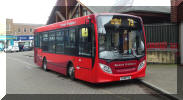
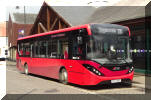

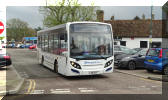
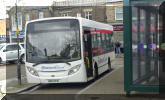
Then Sandy and Biggleswade for Grant Palmer and Herberts.
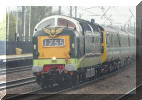
The main attraction was the Deltic working a charter from
Kings Cross to Edinburgh, was only working one engine,
but a great throwback to
when these ruled the crack East Coast trains.
Four coaches in 20 minutes, pity first two suddenly appeared on me.
and then Henley
![]()
Adam Green
Here
is a selection of Buses at Peterborough
![]()
London Bus Route Changes April 29th
2023
On the 29th
April a wide range of route changes took place affecting Central London. On
Thursday last week I took the opportunity to try and get some pictures prior
to the changes taking place.
Route 3
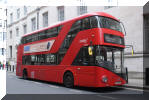
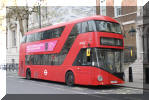
LT 709 stands in Great Scotland Yard and LT 774 in Whitehall.
Route 3 was withdrawn between Lambeth Bridge and Whitehall and rerouted via
Horseferry Road to Victoria Station replacing the 507.
Route 6
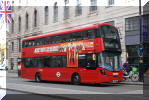
VWH 2418 stands outside Charing Cross Station.
Route 6 rerouted from Hyde Park Corner to Victoria Station replacing Route
16 over this section.
Route 11
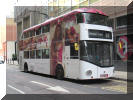

LT 57 stands outside Charing Cross Station and LT 506 at the Liverpool
Street Terminus.
Probably the most high profile change was Rte 11 which was withdrawn between
Westminster and Liverpool Street and diverted to Waterloo. Route 11 had gone
to Liverpool Street for well over 100 years the service having started
before The First World War.
Route 16.
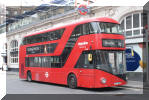

LT 800 arrives at Victoria Bus Station and LT 544 departs back to
Cricklewood.
Withdrawn between Edgware Road and Victoria and diverted to Paddington
effectively becoming Rte 332.
Route 23
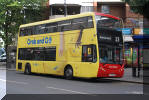
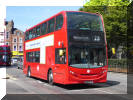
OME 46002 in Ladbroke Grove bound for Hammersmith and First 39124 arriving
there.
Withdrawn between Hyde Park Corner and Hammersmith and diverted to Aldwych to replace Rte 6.
Route 26
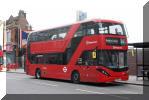
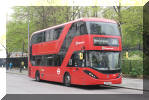
Stagecoach 12511 in Shoreditch High Street and 12520 outside The Old Vic
at Waterloo.
This brings Stagecoach back to Victoria after a very long period since the
Rte 8 was cut back.
Withdrawn between Aldwych and Waterloo and diverted via Whitehall to Victoria Station replacing Rte 11.
Route 59
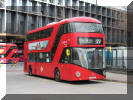
LT 743 stands outside Euston Station and LT heading towards Euston at The
Old Vic, Waterloo.
Withdrawn between Holborn and Euston and rerouted via High Holborn to Bart’s
Hospital to replace Rte 521.
Route 332
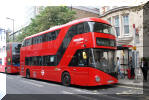
LT 10 in Praed Street, Paddington.
Renumbered Rte 16.
Route 507
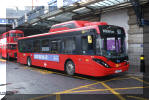
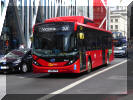
SEe 12
pictured outside Waterloo Station and SEe 14 in Victoria Street.
Withdrawn completely and replaced by Routes 3, 11 and C10.
Route 521
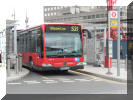
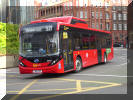
SEe 23 waits outside the I-Max cinema prior to entering Waterloo Station
Withdrawn completely and partially replaced by
Rte 59. Recalling days when Citaros such as
operated Rte 521 MEC 8
and
SEe 23 waits outside Waterloo Station
London Bus
Route Changes 29th April 2023
(Part 2)
It is now Tuesday 2nd
May 2023 and it is the first day of weekday operation after the weekend
changes in Central London.
Route 3
Route 3 has changed its Central London terminus from Whitehall to Victoria
Station and LT 776 arrives in Buckingham Place Road. Route 3 now gives a new
destination from Victoria, Crystal Palace to which LT 768 is headed. I seem
to recall many years ago the 2B also went from Victoria Station to Crystal
Palace.
Route 6
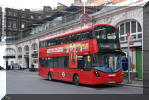
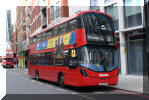
Route 6 has replaced Rte 16 from Edgware Road to Victoria. VWH 2424 arrives
at Victoria Station
whilst VWH 2429 waits in Vauxhall Bridge Road for the return journey back to
Willesden.
Route 11
Today was not a good day to get pictures of the changes on this route as
there was a large all day demonstration by teachers in the Whitehall and
Westminster area and no buses on Rte 11 and Rte 211 were running East of
Victoria.
Route 16
Rte 16 is now effectively the old Rte 332. LT 802 and LT 803 are seen at the
Paddington terminus on Bishops Bridge Road above Paddington Station.
Route 23
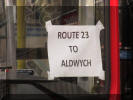
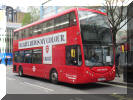
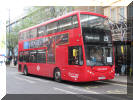
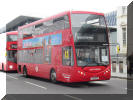
This route instead of going from Hyde Park Corner to Hammersmith it now goes
via Piccadilly and The Strand to Aldwych replacing Rte 6 over this section.
Despite the length of time these route changes have been in place none of
the buses showed an ultimate destination of Aldwych
instead carrying a paper notice in the windscreen. OME 46010 has a blank
destination,
OME 46012 shows Marble Arch and OME 46033 shows Special Service. All the
pictures are taken at Paddington Station.
Route 26
Rte 26 has replaced Rte 11 between Aldwych and Victoria. Stagecoach 12514
arrives at Victoria Station and 12504 waits in Vauxhall Bridge Road before
setting out on the long run to Hackney Wick.
Route 59
Rte 59 has changed its Central London destination from Euston to Smithfield,
Bart’s Hospital. LT 730 loads at Waterloo Station before crossing The Thames
and onto Bart’s.
Routes 507 and 521
Both these routes have now been withdrawn so ending over 50 years of Red
Arrow services in London although the brand name was dropped many years ago.
I took a look in Waterloo Garage and just 5 SEe class buses were there
including SEe 69 and SEe 27
More on these changes appear under London Operators below. Ed.
![]()
Andrew D Webb
An open weekend at the Kempton Steam Museum and neighbouring Hampton & Kempton
Waterworks Railway saw RM5 provide a shuttle bus service. Rugby on 22
April meant that the service ran to and from Feltham, whilst on St Georges Day
it operated from Twickenham. The bus is seem outside the imposing building
loading for the last departure of the weekend.
![]()
![]()
Chris Huntingford
“As ever, waiting at stop T2 in Oxford often gives a good feel as to how the bus system is used in practice. Bus tracking on a smartphone really provides a step change in network usability. But noticeable is the number of people I’ve seen waiting, who say: “Why are some buses marked black and others green with a small flashing symbol?”. This includes across all generations, so it is not an age and IT issue. Can the within-bus screens explain the difference? It would need careful wording, but in effect “Best to trust the green buses, as they are definitely on their way”.
![]()
![]()
From Jack Cooper
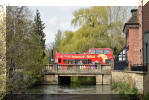
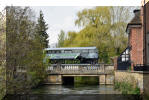
This lopcaon from Park End Street is a nice point,
![]()
![]()
Coach visitors to our area
Gavin Francis
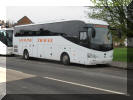
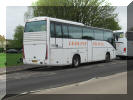
The Leoline coaches were outside The Kings as I went
through the village.
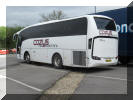
The Laguna coach and Cosys coach in Redbridge coach park.
![]()
![]()
Fleet News and developments


Gavin Francis visited Wycombe on April 19th
Gary Seamarks
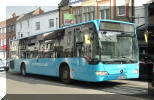
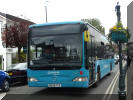
Two Citaros seen in Henley on April 22nd.
Jack Cooper
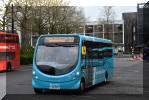
2318 in Wycombe on April 26th in Wycombe.
Tony Bungay
With the recent timetable
changes by Arriva, their X8 service number now appears in Aylesbury in the
middle of the day as shown by 5467 working an early
afternoon outward journey. Previously X8 journeys were only operated to and
from Oxford at peak times, though before Covid there had been regular Oxford
– Thame X8 short workings throughout the day.
Local services in Leighton Buzzard are being revised this month, on the Arriva website there is a map etc of the services all numbered with the L prefix and a description of the features the buses will have. More remarkable is the fact that according to the info all journeys will be free until Christmas, including within the area journeys taken on services 150 and F70.
![]()
Blunsdon's Coach Travel
https://www.blunsdonscoachtravel.co.uk/
George Candelin
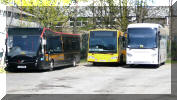
Blunsdon's Downs Road, Witney. KF14 DXY Scania K400EB4, Lahden
Omniexpress 360 (C53Ft) Blunsdon, Bicester
Coach Travel Services East Lancs Esteem Enviro 300
DFZ4646(RX06XFD)
Optare Versa
YJ13HHU,
![]()

Gavin Francis
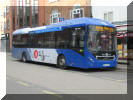
69920 works an X74 in Wycombe on April 19th.
Ryan Butler
(April 18th), I saw First Berkshire's 34378 with it's new
branding, an interesting contrast to 34379 seen last Tuesday (April 11th)
![]()
![]()

Oxford bus operator blames lengthy delays on Botley Road closure | Oxford Mail

Citaros 869 and 870 have returned to Wycombe from Thames Travel. In spite of reports elsewhere 956 was still at Wycombe o March 29th.
Gavin Francis visited Wycombe on April 19th
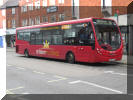
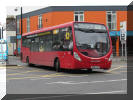

It is suggested that the StreetLites may not have a longer term future with
Carousel. Ed.
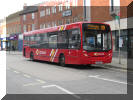
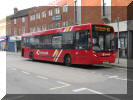
461 seems set to work each day on a roster which
includes the 39 and 41.
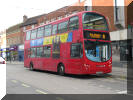
Used quite often for the 8 as seen above.
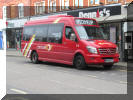
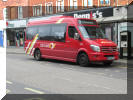

978 is often used later in the day for PMU services and one wonders what has
happened to 980 ?
Jack Cooper who travelled by 102 to Heathrow
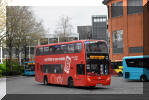
223 is still working at High Wycombe.
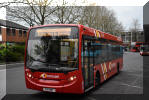
461 is to be seen working most days,

Gavin Francis
Was doing some filing last night and noticed the picture
of OBC 602 I took on 11th Feb has the super rear ad which we said we had not
seen before. It went on to become the latest overall wrap so that rear ad did
not last long.
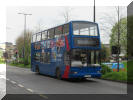
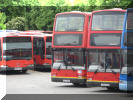
Was walking in Speedwell Street and the blue President
came towards me. Originally PVL 173 it then became Wilts & Dorset 1573.
We got a
picture at Ryde Garage on the IOW in 2012. (picture attached).

306 seen working 5 road on April 24th.
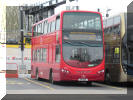
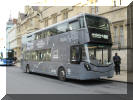
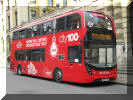
Variety on the 400 which now runs in two parts.

The 11 is now generra;lly worked by two of the remaining Citaros at Oxford.

Gavin sent this picture of 602 at Thornhill on
February 11th 2023. It now carries a full wrap!
Jack Cooper
602
has been wrapped in a livery for charity See Saw, the winner of this years brand
the bus competition. https://www.oxfordbus.co.uk/oxford-bus-company-launch-brand-bus-competition-winning-double-decker
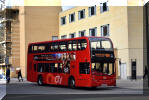
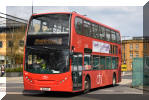
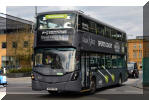
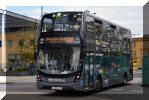
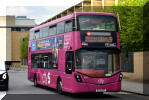
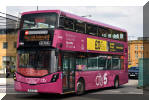
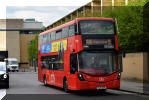
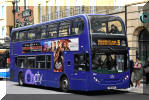
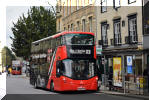
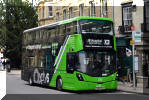
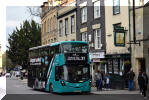
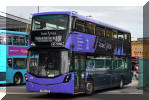
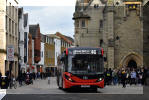
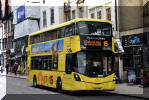
Variety in Oxford city on April 18th thru' 26th.
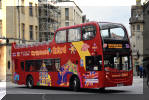
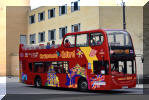
City Sightseeing Oxford style.
Lewis Hawkins
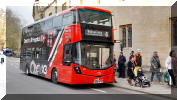

The first two photos are 664 a City X3 bus working the City6 seen at Magdalen Street
Awaiting Its next
service to Wolvercote.

The last photo is 663 turning at Carfax on route X3 to Barton from Abingdon.
pignbob
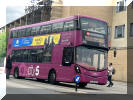
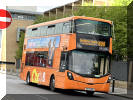
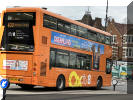
On the 20th, 655 and 690 work the 400 to the Rail station

Gavin Francis
Jack Cooper
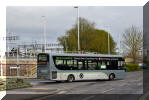
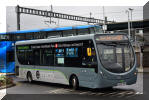
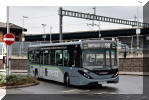
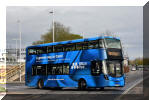
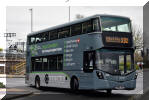
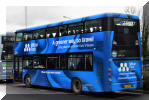 |
|
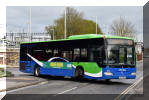
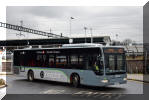
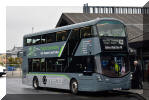
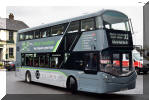
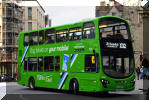
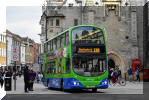
Variety mainly in Dkidcot but also in Oxford from
April 16th.
pignbob
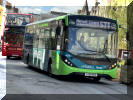
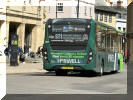
451 displays the new FAST livery for the ST1 on
April 25th.
All three ST1 branded buses now carry this livery.
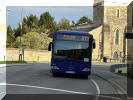
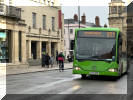
Whilst the regular ST1 buses were being rebranded 842 and 841 work the service.
%20210423%20pignbob_small.jpg)
%20rear_small.jpg)
928 has now appeared in service as seen above on
April 21st.
![]()

Jack Cooper
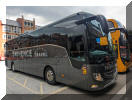
The Eminence Travel Tourismo pictured in Gloucester Green was working the
National Express 160 service down to Bournemouth, I presume the vehicle that
made the morning journey to Birmingham suffered a fault, hence why a 3rd
party operator was used.
![]()

Gavin Francis
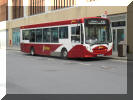
YX12DKA works the X20 in Oxford on April 24th.
Jack Cooper
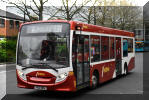
Now in Wycombe with a 130 on April 26th.
Tony Bungay
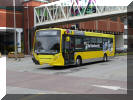
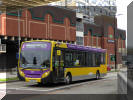
April 26th seemed popular for the use of former Yellow Buses Enviro vehicles
by Redline on their X20 service.
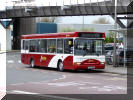
Looking to be fairly immaculate is this Redline 20 year old Dennis Dart on a
130 journey from High Wycombe on April 27th.
At one time like Leyland Nationals before them Dennis Darts could be seen
every where virtually but are now less common.
![]()

Gavin Francis
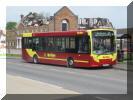
E200MMC YX12AEU at Stokenchurch on April 30th.
Jack Cooper
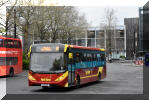
Regulars working the 40 weekdays are E19 and above
E20RRT on April 26th.
![]()


Jack Cooper
I have mainly seen generic gold MMC's on the S6 over the
past few days, along with University of Surrey Scania Enviro 400s, it seems that
quite a few S6 branded buses have been sent to Bristol for the Park & Ride
services.

Gavin Francis
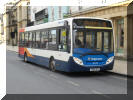
36448 seen working a number 8 service on April
24th.

Looking grubby 15934 at Oxford Station.
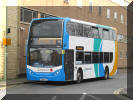
15966 still looks odd in the new local livery on
April 24th.
Jack Cooper
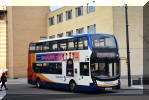
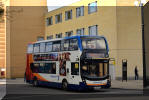
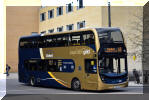
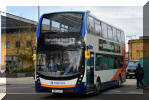
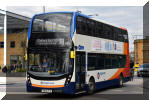
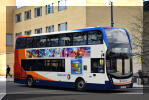
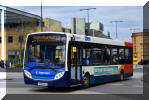
Frideswide Square is now a dead end westwards so
passengers have to get of and walk across to get onwards services.

Jack Cooper
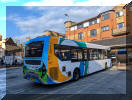
Stagecoach Enviro 200mmc 37433
was operating the X5 on Friday, the first time I have seen a single deck on the
X5 service in a while!

Andrew D Webb
Two cranes operating in Buckingham Palace Road on 29 April meant that Oxford
Tube coaches were unable to serve the normal stops. London bound
services ran via Sloane Square and terminated at a northbound stop opposite
Victoria station. 50427 is seen awaiting return to Oxford with one of
the cranes alongside, whilst the second's boom can be seen in the
background.
Jack Cooper
The Oxford Tube have also been doing Rail Replacement
work between Oxford and Didcot Parkway.
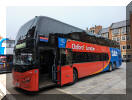
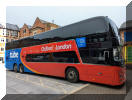
50446 seen in Gloucester Green.
![]()
London operations
Andrew D Webb
To celebrate the Coronation of King Charles III this weekend five London
operators have each wrapped a bus in a commemorative livery for the
occasion. Each vehicle chosen operates on a route with Royal
connections. The design on each bus is similar, but in five different
colours

First to hit the road last Friday was Abellio's Electroliner 3006 which can
normally be found
plying route 111 between Kingston and Heathrow, passing Hampton Court Palace
en route.
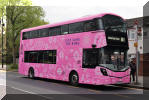
In less regal surroundings it is seen on 2 May at St Leonard's Church in
Heston headed for Heathrow
and a little while later crossing the A4 on the edge of Hounslow.
The Cheeky Panda is using the risqué strapline of 'Who gives a crap?' to advertise toilet roll made from bamboo which claims to produce 50% less carbon emissions than recycled toilet paper.
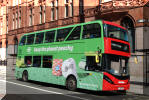
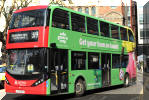
Metroline's BDE2632 shows the offside of the advert in Chancery Lane, whilst
Arriva's EA12 at Sloane Square shows the nearside.
As Liverpool welcomes the Eurovision Song Contest, selected buses in London have gained adverts for Abba Voyage, a concert featuring virtual avatars of the group.
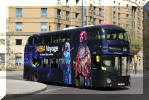
Nearly 50 years after winning the 1974 contest with 'Waterloo' Abellio's
LT779 rounds St George's Circus
having just passed the station which shares its name with the winning track.
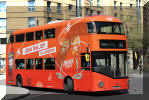
London United's LT75 has gained this bright orange advert for Aperol Spritz,
a Venetian wine-based cocktail, commonly served as an aperitif in north east
Italy.
It is seen here rounding St George's Circus.
Spanish fashion company Loewe have this advert on five New Routemasters.
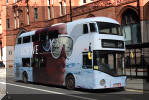
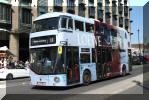
Arriva's LT719 displays the offside at Chancery Lane, with the nearside
represented by Go Ahead's LT67 passing Portcullis House.
Both of these buses are on new sections of route, of which more anon.
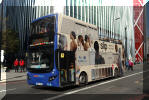
Golden Tours have wrapped this bus for Slip, a way of tying back hair.
It is seen in Victoria with a good load enjoying the spring sunshine.
29 April saw several changes to routes in central London,
including the withdrawal of the remaining Red Arrow routes (507 and 521).
Consequently, several routes were altered to maintain public transport over
roads served by these routes.
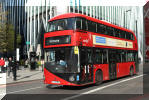
Route 3 has swapped its Whitehall terminus for Victoria, where Abellio's
LT781 is seen arriving on the first day.
Route 6 has lost its section between Hyde Park Corner and Aldwych in favour of covering the erstwhile 16 to Victoria.
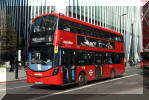
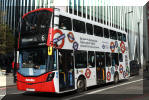
Metroline's VWH2415 and VWH2374 are seen setting out from Victoria on the
first day.
VWH2374 is one of several buses to gain promotional adverts for TfL.
Arguably the highest profile alteration has been route 11, for many years touted as the London bus route from which to see the Capital's sights. The exact route has varied over the decades, but it was a stable link between Liverpool Street and Fulham until last Friday. From 29 April it relinquished its tenure on the section between Liverpool Street and Parliament Square to route 26 in favour of a short extension over Westminster Bridge to Waterloo.
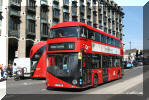
On the first day LT56 has just crossed
Westminster Bridge and is passing Portcullis House en route to Fulham.
Route 521 only ran on weekdays to link Waterloo and London Bridge via Holborn and the Square Mile but has been replaced by two routes running daily. Route 59 has abandoned the section between Holborn and Euston for an extension to Barts Hospital. Route 133 meanwhile now heads from Bank towards Red Lion Square at Holborn instead of Liverpool Street station.
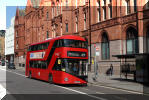

Arriva's LT982 and HV28 represent the new order, both passing the impressive
Prudential Assurance Company building on Holborn.
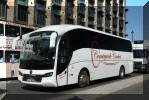
Countrywide Travel's Sunsundeguis SC7 is seen passing Portcullis House.
Gavin Francis
Putney Bridge
Hammersmith
![]()


from Stephen Archer
Motts
Yellow Bus Memories - 3
Stephen Archer
was a part-time driver for Motts Yellow Bus between 1993 and 1995. Now - nearly
30 years later and living in the USA - he looks back fondly to those years when
he spent Saturdays driving buses around Oxford and the Chilterns.
********************************************
Yellow Bus
Vehicles
As an “anorak”
myself, one attraction of Motts Yellow Bus was the interesting collection of
vehicles it operated. The second was the apparently promiscuous allocation
policy.
It was never
possible to predict with any real certainty what type of vehicle I would be
driving, although generally if it was a 280, it was going to be a Metrobus and -
if a Reading run on the M1 - it would be a Leopard. Of course, that made it
hugely interesting for me as an enthusiast. I’d turn-up and drive anything they
told me anywhere they wanted!
Another part of
the interest was that Motts ran “real”, heavy-duty models. At the time,
minibuses were wildly popular in the industry but there were - fortunately -
only three Mercedes minibuses in the Yellow Bus fleet.
As two of these
had manual gearboxes, I couldn’t drive them as I had an “automatic only”
license. Phew!
If - rarely - I
was allocated the Mercedes automatic (G360 FOP), I generally was able to make an
excuse and swap for a “real bus” instead. The management of the day didn’t have
an issue with this as any of the full-time drivers working on Saturday would
much prefer to drive a nice, comfortable, new minibus, rather than yet another
duty on some rattling old Leopard!
It was also
relatively unusual for me to have one vehicle for the whole day. Typically I
worked duties that had a Lunch break (bring your own sandwiches) back in the
rather basic Driver’s Break Room at Stoke Mandeville garage. The second part of
the duty always had a different vehicle - inevitably if I had been driving a
single decker in the morning, I’d have a double decker in the afternoon. Or
vice versa.
This certainly
kept the driver on his toes (we had no lady drivers) as - even if overhead
clearances were not an issue - the longer wheelbase of the single deckers
obviously required different manouvering on sharp corners. Of course we got used
to this as all bus drivers do…
During my time,
the Motts Yellow Bus fleet included 10 or 11 Leopards of various types. Then
there were the five Metrobus “Mark One” and two “Mark Two” models. There were
also four DMSs, however these were generally unpopular with the drivers and so
did not venture out on Saturdays when the vehicle roll-out was smaller than
during the week. So I never drove a DMS.
1994 saw changes
in the fleet. The DMSs went away largely unmourned and a variety of new models
appeared. There were two Leyland Lynxes, two Metrobus Mark Twos, an almost new
Olympian and two brand new Volvo B6s.
According to a
fleet list from June 1994 that I wrote in the back of my notebook, the company
also had a “pet” Fleetline (KON 323P) that had been new to WMPTE and a Dennis
Domino. I never saw either of them during my time with the company.
All told, there
must have been around two dozen active vehicles in the fleet during the time I
was driving for Yellow Bus.
1. MCW Metrobus
The “Mark One”
models had been in the Yellow Bus fleet since the beginning. They lasted right
through to the end of operations. I drove one (JHE 141W) on the very last day of
Yellow Bus, 22 July 1995.
These vehicles
had been new to South Yorkshire PTE. They were fitted with Rolls Royce engines -
which was relatively unusual - and thee-speed gearboxes, which was not.
The
fully-automatic gearboxes with torque converter-type drive could produce some
hard changes at times. Some of them - I can’t remember which - also had an
engine-braking system that was controlled by a wand from the dashboard. This was
useful on the hills around High Wycombe: provided you remembered to use it, that
is. But those without it managed just fine too.
Personally, I
liked the Metrobus cabs. They were enclosed, with the stairs rising up behind
the driver, and so quite cozy and warm in winter. The latter, in particular, was
a VERY important driver benefit! The whole bus felt like it had been designed
and built for heavy-duty urban operation. Of course the shorter length made it
easier to manage in town than the single-deckers, too.
As previously
discussed, the low top speed of the Mark Ones made it a struggle sometimes on
long, fast stretches. There was almost no leeway for the driver to make-up time
if he had been delayed leaving Oxford, particularly with a “slow’ bus.
“The Cubs” (CUB
539Y and CUB 540Y) were Gardner-engined Mark Two Metrobuses that had started
life with West Yorkshire PTE and had arrived with Motts after a spell with
London Transport. I remember them being faster and somehow less ponderous to
drive than the Mark Ones.
Overall, I
enjoyed driving the Metrobuses. But they were not really ideal for long, fast
cross-country routes like the 280 and I much preferred to have control over gear
changing that was provided by a semi-automatic transmission.
2. Leyland
Leopard
Leopards formed
the backbone of the Yellow Bus fleet. They were all 36-Foot long models, some of
which had started life as express buses or coaches with National Bus Company
subsidiaries.
Bodywork was a
real variety. In addition to one ECW coach-bodied example, there were four with
Duple bus bodies and one with the relatively rare Plaxton Bustler body. The
remainder had Willowbrook coach bodies. So far as I remember, they were all
B49F.
All the Leopards
had 0680 engines. They were LOUD!!! Mind you, I loved the noise and would drive
with the cab window open to benefit from the soundtrack whenever possible!
All were
semi-automatic, too. This pleased me as it was my preferred form of
transmission. All except one - OWG 368X the Plaxton Bustler-bodied model - had
five-speed Pneumocyclic gearboxes. These were air-operated and the gear change
knob sat atop a large cast tower to the driver’s left side.
The biggest
issue for me was that the Pneumocyclic gear change was soooo slooooow! The 0680
engines were always slow to loose revs when the driver’s foot lifted from the
accelerator and this seemed exacerbated somehow by the gear change. To achieve a
smooth change, it was necessary to hold your foot off the accelerator for at
least a second before selecting the next gear or a very unprofessional gear
change resulted.
My answer to
this was to take the gear lever out of the previous gear, put it into the
“neutral” gate and slowly slide the lever to the left and right in neutral
before selecting the next gear. This made “timing” the change much easier and
more consistent, the passengers benefitted from a nice, smooth gear change and -
I hope - the powertrain also.
By far the best
bus - in my opinion - was OWG 368X. This had a CAV electric change, the type
with a tiny “switch-like” gear lever that was mounted on an extension of the
steering column. This was much faster and easier to change gears with. Perhaps
for that reason, it seemed a nice, “tight” bus and lasted to be the final
Leopard in Yellow Bus service, long after 1995. Maybe my opinion was shared by
others…
Generally the
Willowbrooks were real “rattlers”, together with a couple of the Duple bus
bodied models. Sometimes the noise from the rattling bodywork could be almost
deafening inside the vehicle.
Without doubt,
the worst of all was Willowbrook-bodied DDM 33X. This had been new to Crosville
but it was just a terrible all-round vehicle to drive or ride in. I believe that
it was the first Yellow Bus Leopard to be scrapped - in December 1994. Good
riddance to that one!
My last duty on
DDM 33X was on 26 November 1994. I remember it well as it suffered brake failure
on Desborough Road in High Wycombe when I was driving it on the M11. We had a
satisfyingly full load at the time and - on pulling away from the bus stop at
the top of this very steep descent - I glanced down at the brake air pressure
gauge, this being my normal practice at such locations.
I did a
double-take as I saw the needle of the gauge setting rapidly towards the zero
mark. S**t, no air!!! Fortunately I had only just changed into second gear and
we were still on the fairly flat area before the descent. So I was able to stop,
pump-up the brake pressure while stationary and crawl down the hill in first
gear, with my eyes glued the pressure gauge all the way down.
After a VERY
careful journey to High Wycombe, I stopped at the Bus Station and phoned the
garage. “Come back empty, slowly and carefully”, advised the voice on the other
end: advice that I scrupulously followed!
So maybe that
brake issue was the last straw for DDM 33X, in which case I could have been the
last driver ever to have suffered from its “charms” in service…
3. Volvo B6
Being
absolutely new in every respect, these Northern Counties-bodied buses were the
pride of the fleet. Drivers were even supplied with a printed card explaining
the controls and how best to operate the bus. That was really something!
They were
certainly fast and easy to drive. Together with the Leyland Lynxes that appeared
around the same time, they were frequently deployed on the Oxford routes to
emphasize to the Oxford Bus Company how well Yellow Bus was doing!
However I
rapidly formed a strong dislike for them. Somehow the position of the
accelerator pedal caused my foot to be at a very uncomfortable angle. After an
hour or two, I was in a stage of serious discomfort. After an all-day duty: I
was barely able to walk afterwards. Fortunately that only happened twice…
I did a partial
duty on L923 LJO on the last day of Yellow Bus operation. This event was
photographed as I left High Wycombe Bus Station on a M1 to Aylesbury - I
remember seeing a photograph published in the Oxford Bus Page some time
afterwards.
4. Leyland Lynx
In late 1994,
Motts acquired two of these very fine buses. They were LX112TL11ZR1 models that
had previously been owned by Atlas Bus. The registrations were E965 PME and E966
PME.
I drove first
drove “965” on 14 January 1995 and enjoyed the experience immensely. They had
plenty of speed and power, with no vices that I could see. But somehow they felt
a very big bus. Although the same overall size - 36 Feet - as the Leopards, the
“square cornered” design made them feel much larger in all respects.
These Lynxes
were among the few Yellow Bus vehicles (along with the B6s) that were taken over
and operated by Arriva.
My most lasting
memory of the type was after the end of Yellow Bus. I continued to drive for
Arriva and on 10 February 1996 was running a late afternoon 260 (Oxford to Thame
via the “scenic route”) with “965”.
We set off from
Oxford with a good load but - at the first bus stop after Magdalen Bridge -
pulled-up behind an Olympian that was running the previous 280 departure. Or at
least it should have been. Sadly it had expired and the driver had called help.
The Olympian
also had a good load, but it seemed the right thing for me to rescue as many
passengers as possible from this situation. So, I packed them all into the Lynx
- every last one!
How many people
we had on board, I really don’t know. It was certainly far above the legal limit
and the design specifications for the Lynx. Possibly it was more than 80. Yet
after the extended stop to take the throng on board, that Lynx still drove fast
and handled superbly. Many passengers were very appreciative as they disembarked
at Headington or Thame. I never mentioned that one to the management…
Motts
Yellow Bus Memories - 4
********************************************
After the end of
Yellow Bus, I drove for Arriva The Shires until March 1996, mainly on the 280,
at which point I emigrated to the USA. Arriva also had some interesting vehicles
and I was able to try my hand at Olympians, Bristol VRTs and Leyland Nationals.
But somehow it was not the same as being part of the “family atmosphere” of
Yellow Bus.
Looking back, I
remember some of the personalities who also worked at Motts during that period.
One of the drivers was close to the end of a long career of bus driving. He
rejoiced in the nickname of “Basher”. Why? Well, the story goes that long before
- back in the 1970s - he had been a driver for London Transport. On the first
day DMSs were allocated to the garage, he turned out sharply to start his duty,
forgetting that the cab was now in front of the front axle! The resulting
incident led to the long-lasting sobriquet…
It must have
been late in 1994 that I became aware of a shy, very young “anorak” who had
started work at Yellow Bus. Far too young to drive, he was cleaning-out buses,
then started to “shunt” them around the very tight confines of the Stoke
Mandeville yard. Given the limited constraints of the depot, this was no mean
feat! The buses were usually parked so close side-to-side that the drivers’
mirrors needed to be folded back to avoid damage…
Someone must
have told him that I was also an enthusiast, so we enjoyed chatting about our
shared interest. His name was Michael Wootton and he later went-on to found and
run Woottens coaches of Chesham.
Although I
recollected the Leopard brake incident in a previous episode, I have to say that
- although sometimes looking a little rough around the edges - the Yellow Bus
fleet was generally very reliable and well-maintained in my experience.
Fleet List
In the back of
my notebook, I had transcribed a Yellow Bus fleet list dated June 1994. Although
I can’t remember now where I found this information, I’d be prepared to bet that
it was on one of those now-lost editions of the Oxford Bus Page (as it was then)
with updates from later dates.
Here it is. The
“Yes” of “No” indicates if I drove that bus in service.
L922 LJO
Volvo B6/Northern Counties
New to Motts 1994
Yes
L923 LJO
Volvo B6/Northern Counties
New to Motts 1994
Yes
CUB 539Y
MCW Metrobus II/Gardner
New to WYPTE, Ex LT
Yes
CUB 540Y
MCW Metrobus II/Gardner
New to WYPTE, Ex LT
Yes
JHE 139W
MCW Metrobus I/Rolls Royce
New to SYPTE
Yes
JHE 141W
MCW Metrobus I/Rolls Royce
New to SYPTE
Yes
JHE 143W
MCW Metrobus I/Rolls Royce
New to SYPTE
Yes
JHE 163W
MCW Metrobus I/Rolls Royce
New to SYPTE
Yes
JHE 164W
MCW Metrobus I/Rolls Royce
New to SYPTE
Yes
KON 323P
Daimler Fleetline FE30ALR/Metro Cam
New to WMPTE
No
F506 OYW
Leyland Olympian/Northern Counties
Acquired Summer 1994 No
OJD247R
DMS FE30ALR Special/Metro Cam
Ex LT. Sold Summer 1994
No
OJD365R
DMS FE30ALR Special/Metro Cam
Ex LT. Sold Summer 1994
No
OJD436R
DMS FE30ALR Special/Park Royal
Ex LT. Sold Summer 1994
No
OJD444R
DMS FE30ALR Special/Park Royal
Ex LT. Sold Summer 1994
No
OWG 386X
Leyland Leopard/Plaxton
CAV gear change
Yes
MUS 151P
Leyland Leopard/Duple
Yes
MUS 152P
Leyland Leopard/Duple
Yes
TGD 219R
Leyland Leopard/Duple
Yes
EHS 107T
Leyland Leopard/Duple
Yes
UKE 830X
Leyland Leopard/ECW PSU3G/4R
New to East Kent
Yes
TPT 27V
Leyland Leopard/WillowbrookPSU3F/4R
New to Alder Valley Yes
GGM 96W
Leyland Leopard/Willowbrook
Yes
DDM 33X
Leyland Leopard/Willowbrook
New to Crosville
Yes
LCY 101X
Leyland Leopard/Willowbrook
Yes
LOA 834X
Leyland Leopard/WillowbrookPSU3F/4R
New to Mid Red
Yes
C52 HDT
Dennis Domino
No
G360 FOP
Mercedes Minibus
Automatic
Yes
K184 GDU
Mercedes Minibus 811D
No
J171 GGG
Merceded minibus 709D
No
E965 PME
Leyland Lynx LX112TL11ZR1
New to Atlas Bus
Yes
E966 PME
Leyland Lynx LX112TL11ZR1
New to Atlas Bus
Yes
Again, thanks for reading. I hope that others who remember Motts Yellow Bus, or - better still - were involved in the operations - will add their stories and photographs to these ramblings. Perhaps some of the history of an interesting episode in the area’s public transport can be re-created now, before it all becomes lost in the mists of time.
with more from Matt Cooper
Putting my anorak back on and going through the archives in search of information on Motts Travel's Yellow Bus operation. Great to read Stephen Archer's memories and hard to believe they are from three decades ago! If I'm correct I travelled on his bus in October 1993 from Aylesbury to my Aunt and Uncle's house on Church Way in Haddenham.

He kindly gave me a 'T-key' (in the
photos) which to the young gricer was akin to a nugget of gold!
I frequently
used it when driving buses and coaches several years later.
Please excuse the quality of the pictures which were taken with my camera phone,
our scanner now no longer with us! The A5 booklet was, I believe, a one off and
contained all timetables with a list of routes detailed in the inside cover.
More common was the later 'slimline' type as shown for the 230/280 and M11 and
396 services. The latter was introduced to serve the good bus territory of
Micklefield Estate and any type of vehicle could appear on the service. Wycombe
Bus Company countered this with the 395 using the F-registered Leyland Lynxes
and a dedicated rota of drivers. This was in addition to the 303 and 326 routes
also serving these roads. To utilise the drivers and vehicles more efficiently
Wycombe Bus later made the 395 a cross-town service serving Garretts Way in
Downley, previously unserved by a bus route.
The yard plan is of Motts Stoke Mandeville premises with 21 parking 'bays'
detailed. This would have been a tight fit with some careful manouevring
required by staff! A fleet list is also detailed (from 1994) as well as some
Wayfarer tickets. Some vehicles were fitted with the more advanced AES Pro-data
ticket machines for use on services serving Milton Keynes. These large machines
could validate smart cards etc and had the appearance of a small computer!
That spotter jotter is back again! Such was my dedication to the hobby (!) on
the morning after Yellow Bus operations ended I rode my trusty Raleigh mountain
bike from High Wycombe to Stoke Mandeville with video camera to film operations
happening that day. Detailed indeed with Mercedes Benz G360 FOP noted departing
for The Shires Aylesbury depot at 07:32 and Volvo B6 L922 LJO at 12:38 for
Watford for repaint! Staff were, as always, most accommodating and I even had a
trip to Rabans Lane and back on the 'new' Shires vehicles.
For those that still have a copy in their collection I can recommend Ian Allan's
Buses Magazine from November 1994 which features an article on Motts Yellow Bus
(it's not £1.90 anymore!) Or seek out a copy at a bus rally as there always seem
to be boxes of various magazines for sale! There are some good pictures
accompanying the article including one with the Chilterns as a backdrop. I would
have seen that view but probably not appreciated it as I rode my bike to and
from Stoke Mandeville in July 1995!
and Andrew Dyer
The really interesting stories and pictures of Motts
reminded me of the long-gone operator Shurrock’s of Brill. When Motts started to
expand in the 70s one of the businesses they acquired was Shurrock’s.
Ken Shurrock was a real local character who had a varied
fleet of old coaches and in addition to local school and private hire work ran
the stage carriage service from Brill to Oxford via Oakley and Horton-cum-Studley.
Then all of a sudden in 1972 and thanks to Bus Grant came
Shurrock’s only new vehicle, a 45 seat Bedford YRQ. This vehicle transferred to
Motts when the company was taken over I think.
Here it is in the old Gloucester Green next to two
Charlton Services buses, KGU 239 , ex-London Transport RT1525 and 5588 TR an AEC
Reliance 470 new to Summerbee Coaches of Southampton in 1961.
![]()


DOUBLE DECK TOURS - THE END
from Paul Bateson
It was a sad day on Sunday, 23rd April 2023 with the closure and final day of
Double Deck Tours, Niagara Falls, Ontario.
The company was established in 1965 by Norman Watson and was renowned for its
fleet of former London buses from the RT / RTL / RTW classes and later its large
fleet of RCL / RM / RML Routemaster buses.
It was a family run business until November 2018 when it was sold to
Ambassatours in Halifax, Nova Scotia. The pandemic and loss of tourists hit the
company hard and it was announced in late 2022 that the company would be closing
permanently and the buses would be transferred to Halifax, Nova Scotia..
On the final day, Sunday 23rd April 2023, I arrived at the garage just after
7.30 am as the sun was rising. The drivers were gathered together just after
8.30 am for a final briefing. Each bus carried an authorised route
description and trip permits as the buses are over height. Strict
instructions to drive at a distance of 200 feet apart. Each driver was
able to plug in to use their phones if an emergency arose. The support and
safety vehicle had a trailer full of parts in case of a breakdown. There
was a good safety notice on the back of the trailer. Each bus also had a slow
moving vehicle symbol at the rear.
The buses were as follows:
DDT Fleet Number - Routemaster number
10 - RM 1618 - Off side door fitted now H35/24RD
02 - RCL 2252
19 - RM 1102
18 - RM 1604 - open top
14 - RM 2162 - open top
08 - RM 1242 - open top
17 - RM 797 - open top
04 - RM 2165
1 - RCL 2255
24 - RML 2467
The buses pulled out of the Bossert Road yard for the last time at 8.52 am. at
the start of the scheduled five day trip to Moncton, New Brunswick where they
will be prepared for operation in Halifax, Charlottetown and Saint John.
They will be joining the world's largest fleet of Routemasters with
Absolute Charters (Ambassatours).
Many pictures were taken as the buses left the yard and as they turned off
Bossert Road on to Sodom Road. I managed to get ahead of the convoy for
the first pictures of the buses entering the Queen Elizabeth Way (QEW).
The convoy was viewed from the overpass in Niagara on the Lake (NOTL) at
Glendale Avenue over the QEW. Whilst I waited for the buses to arrive, a
car stopped with the driver thinking I was going to jump off the bridge!!
I knew the buses would be stopping at Casablanca Boulevard in Grimsby where
there is a service centre and many pictures were possible here.
It was a sad day for me as I had known the company since 1973. I had the
privilege of driving the Routemasters between 2008 and 2016. Niagara Falls
will not feel the same without its red London double-decker buses.
**********************************************************************
THE MUSEUM OF PUBLIC TRANSPORT OF WALLONIA
from Martin Dowling
I was in Belgium last week and have some photos from
Liège which may be of interest. There is a public transport museum there
which is predominantly devoted to historic trams and buses and is housed in a
former tram shed. Here is the English version of their web site
https://www.musee-transports.be/en/homepage/
Here are some notes on various
vehicles and photos numbered to match.
Liège had an extensive
trolleybus system - they claim it was the largest in western Europe, but I'm
sure that London's must have been larger.
432 was built in 1932 and
carried on in service until the 60s.
Perhaps the most interesting
vehicle is another trolleybus number 402 built in 1934 and which ran until the
late 50s. This bus is double-ended and operated similarly to a tram and
has doors on both sides and a steering wheel at each end. The centre axle
is motorised and the other two axles both steer. The seatbacks can be
flipped over to face in the correct direction at the end of the route, the
driver moved to the other end and the second set of trolley poles used. It
was built for a particular route along narrow streets with very sharp corners
where a bus could not turn at the end.
A later trolleybus is number
544 built in 1954 and was one of a large number of similar vehicles. The
chassis, bodywork and electrical components were entirely made in Belgium.
During the second world war
all of the bridges in the city across the river Meuse were destroyed. They
were replaced with temporary bridges, but these were incapable of taking heavy
vehicles. Several motor buses were ordered to be made as lightweight as
possible so they could cross the river.

Number 766 has a locally made
body on a Leyland Olympic chassis and engine in 1952 and could be used on routes
crossing the river.

Also from 1952 is another lightweight bus number 72.
This has Jonckeere bodywork on a Mercedes lorry chassis.
The first public transport in Liège was a tramway system. Firstly horse drawn, later steam hauled and then electric.
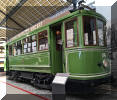
Tram
number 114 ran from 1908 to 1952 and was the first tram where the driver was in
an enclosed cab
which must have seemed like luxury for them. This was made
by MAN.
There have been no trams for over 60 years but a new line
is currently being built. Traffic in the city is terrible with multiple
construction sites and road closures. In the museum is a mock-up of the
type of articulated CAF tram that will be used. It will be wonderful when
it is complete.
Regarding modern buses, Liège operates lots of different makes of bus. Here are photos of a Solaris Urbino hybrid (5632), a Mercedes Citaro (500111) and an Iveco Crossway (21045), but there are also VDL and Volvo buses in use. There are also a couple of general photos of buses outside Guillemans station where many routes converge.
The station is a sensational piece of architecture and worth a visit in itself.
![]()

Paul Hawkins from The Lake District
Lake District round Windermere, Ambleside and Grasmere to
catch the first 23 plate E400 MMC'S to enter service with Stagecoach on the 555
Service from Lancaster to Keswick via the Central Lakes as well as the Open Top
buses in Service
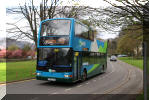
The older President Bodied Vehicle was operating between
Patterdale and Penrith
and from Nottingham
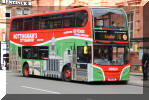

Two Special liveries from Nottingham and the new Fosseway
flyer between Nottingham and Newark
![]()

Vehicle movements for April
2023,
Vehicles In,
First
Essex.
B7RLE;
YJ05VVB, MX05CBY, MX05CBF, MX05COO, MX05CEA, MX05CEU, WA56OAU.
Dart;
SN05EAM
Eastern
Counties.
Dennis
Trident LR02LXL, LR02LXZ, LR02LYF, LR02LYD, LR02LXU, LR02LXV, LK51UZS
First
Cymru.
B7RLE;
MX06VPL, MX56AFO, MX56AFK, MX56AFE.
B7TL;
YN06URF
West
Yorkshire.
B7TL;
YJ04FZY, YJ54XUE, YJ04FYE, YJ04FYZ, YJ54XUO, XLK.
B7RLE;
YJ05VVS, YJ05VVU.
Pelican.
Enviro
200 MMC SK17MMU
Vehicles Out.
Seven
Sisters, Eastbound
·
Volvo Ayats EU05VBK
A2B,
Cambridge.
·
Volvo B7TL AU53HKD
Mc
Gills, Scotland.
·
Enviro 400;YX62BFL & BKO
Brighton
Horizon.
·
Scania N94’s; KX04RDU, RDV, RCZ
Ipswich
Playbus.
·
Enviro 400 LK59DZH
JSM
Training, London.
·
Enviro 200 LK08DWN
Following to Scrap @ MC Tractors Ramsey.
·
Enviro 200; AY07CUA ex Bournemouth Transport.
·
B7RLE; YJ05VVB, MX05CBY, MX05CBF, MX05COO, MX05CEA, MX05CEU, WA56OAU.
·
Dart; SN05EAM
·
Dennis Trident; LR02LXL, LR02LXZ, LR02LYF, LR02LYD, LR02LXU, LR02LXV, LK51UZS
Following to Scrap @ Hardwicks, South Yorkshire.
-
B7RLE; MX06VPL, MX56AFO, MX56AFK, MX56AFE.
-
B7TL; YN06URF
-
B7TL; YJ04FZY, YJ54XUE, YJ04FYE, YJ04FYZ, YJ54XUO, XLK.
-
B7RLE; YJ05VVS, YJ05VVU.
Fleet
127 on loan to Transpora Bournemouth, due to return during May.
![]()
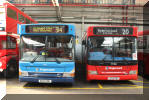
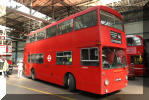
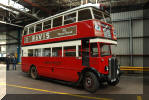
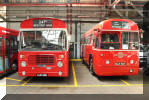
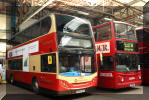
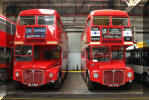
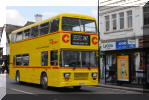
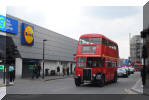
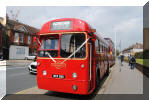
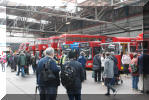
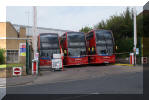

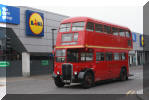
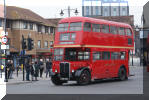
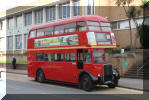
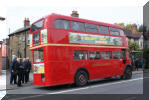
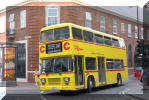
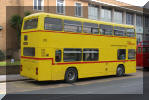
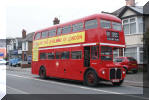
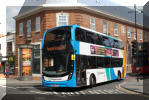
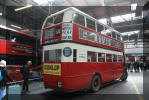
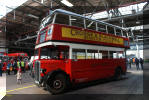
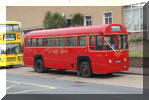

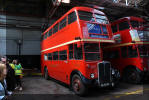
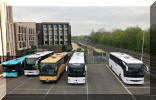

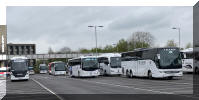
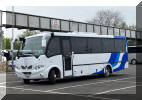
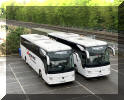
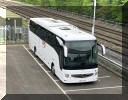
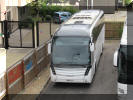
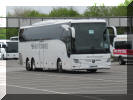
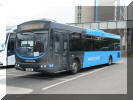
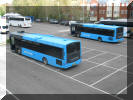
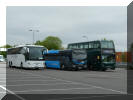
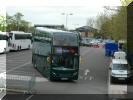
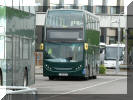
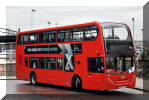
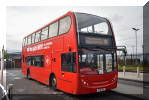
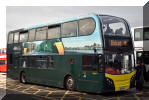
_small.jpg)
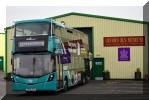
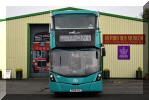
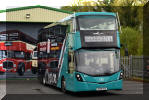
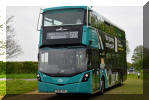
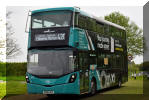
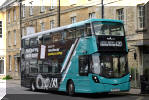
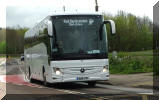
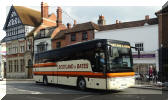
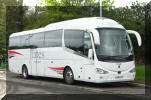
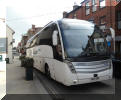
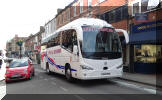
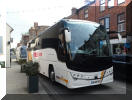






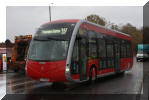
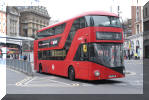
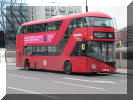
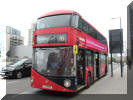
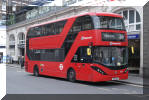
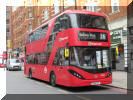
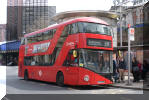
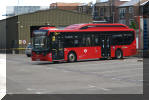
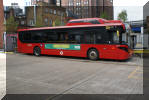

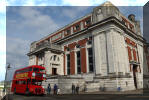
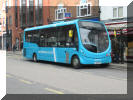
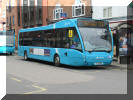
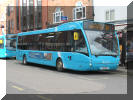
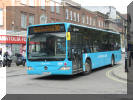
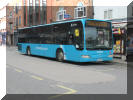
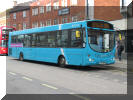
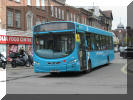
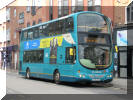
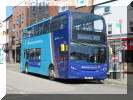
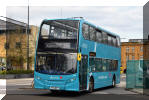
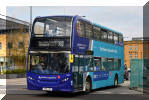
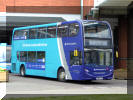
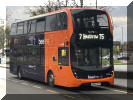
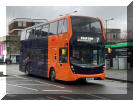
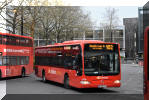
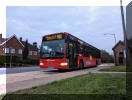
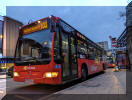
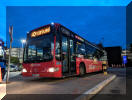
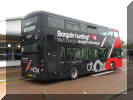
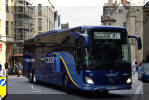
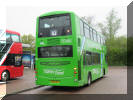
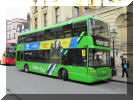
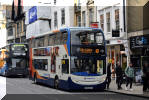

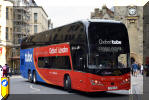
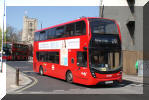
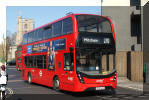
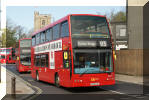
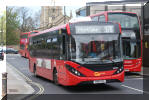
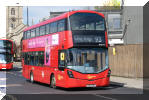
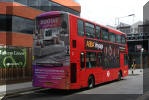
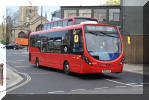
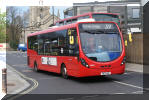
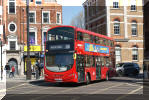


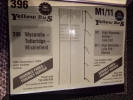
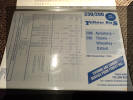
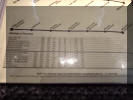

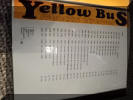



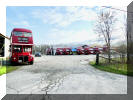
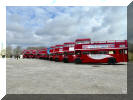
%20departing%20Bossert%20Road%20for%20the%20last%20time%20on%2023%20Apr%202023%20P%20Bateson_small.jpg)
%20departing%20Bossert%20Road%20for%20the%20last%20time%20on%2023%20Apr%202023%20P%20Bateson_small.jpg)
%20departing%20Bossert%20Road%20for%20the%20last%20time%20on%2023%20Apr%202023%20P%20Bateson_small.jpg)
%20departing%20Bossert%20Road%20for%20the%20last%20time%20on%2023%20Apr%202023%20P%20Bateson_small.jpg)
%20departing%20Bossert%20Road%20for%20the%20last%20time%20on%2023%20Apr%202023%20P%20Bateson_small.jpg)
%20departing%20Bossert%20Road%20for%20the%20last%20time%20on%2023%20Apr%202023%20P%20Bateson_small.jpg)
%20departing%20Bossert%20Road%20for%20the%20last%20time%20on%2023%20A%20P%20Batesonpr%202023_small.jpg)
%20departing%20Bossert%20Road%20for%20the%20last%20time%20on%2023%20Apr%202023%20P%20Bateson_small.jpg)
%20departing%20Bossert%20Road%20for%20the%20last%20time%20on%2023%20Apr%202023%20P%20Bateson_small.jpg)
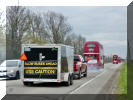
%20-%20NOTL,%20QEW%20at%20Glendale%20Ave%20-%2023%20Apr%202023%20P%20Bateson_small.jpg)
